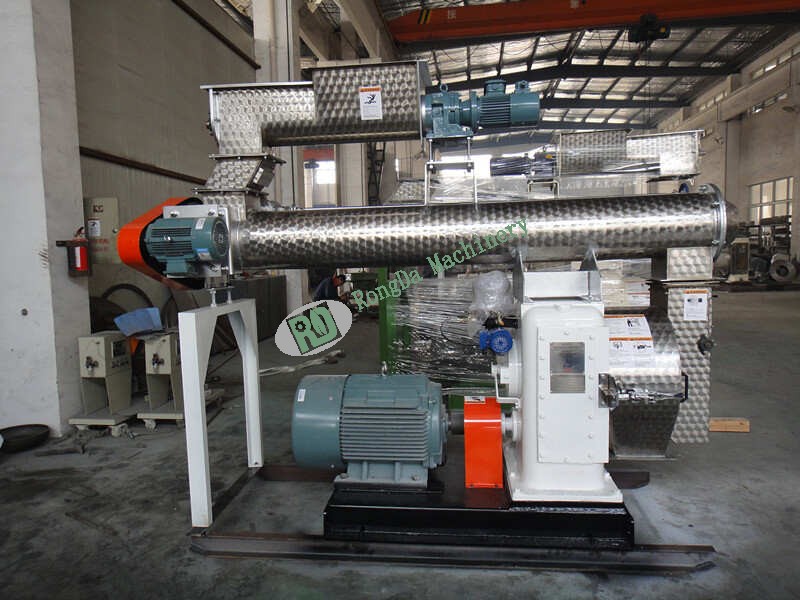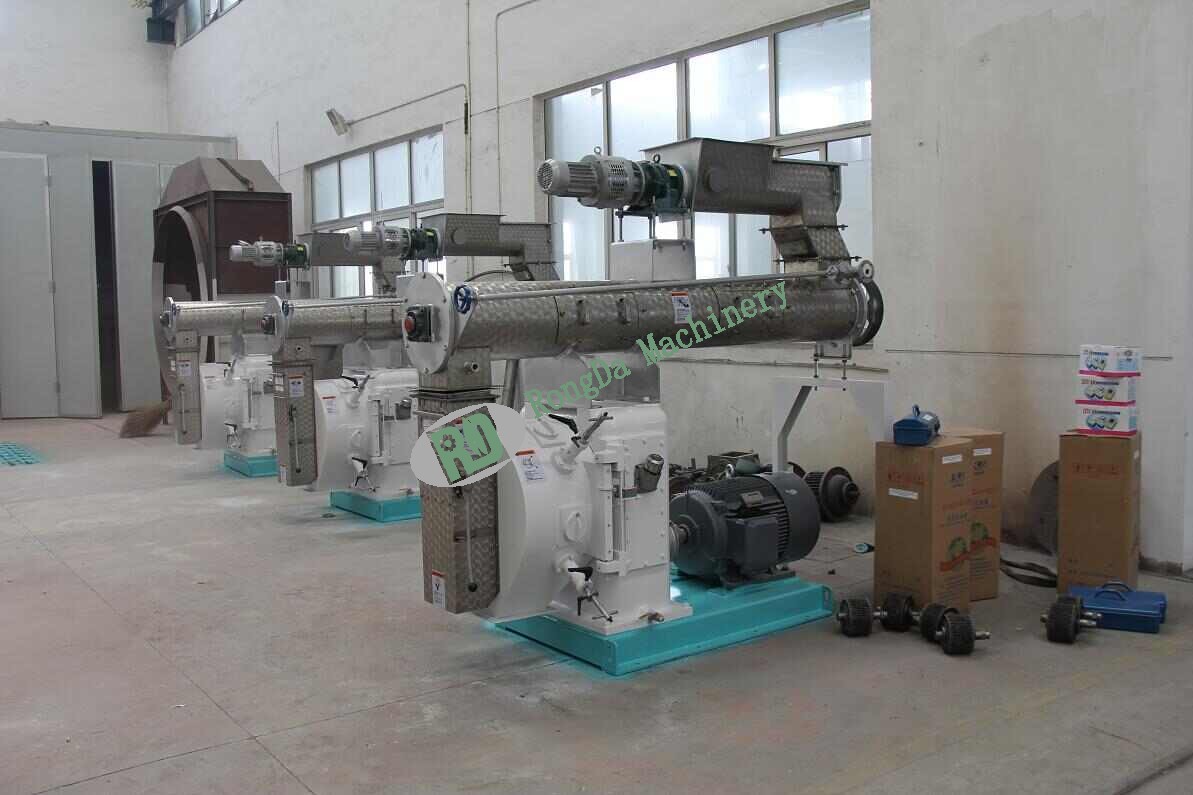Welcome to Rongda Machinery Co., Ltd
Toggle Navigation
Think modern poultry farming is just about chickens and coops? Think again. Staying competitive means squeezing every drop of efficiency out of your operation. And right in the middle of that? Poultry feed machines. These aren't just fancy gadgets; they're game-changers that flip feed management on its head. Forget endless hours lugging buckets – we’re talking precise, automated feeding that gets the right nutrition to your birds exactly when they need it. That consistency is magic for bird health, growth rates, and getting a uniform flock. Oh, and let’s not forget the money saved! These machines are champions at slashing expensive feed waste and making the most of your resources. Seriously, trying to run a serious poultry operation today without them? Tough going.
What’s Actually Out There? Feed Machine Types Decoded
You wouldn't buy just any truck for any job, right? Same goes for feed machines. The best pick depends on your setup:
Continuous Feeders: The heavy lifters for big operations. Imagine feed constantly moving down troughs, thanks to augers (think giant screws) or dragging chains. As birds eat, more rolls in. Perfect "eat whenever you want" setup for broilers and fast-growing birds who need fuel around the clock.
Batch Feeders: These are the schedulers. They dish out specific amounts at set times. Great for managing intake, especially with breeder flocks or layer hens where keeping body weight on track boosts egg production. Options go from simple hoppers you fill yourself to fancy computer-controlled systems.
The Prep Crew (Choppers/Mixers): Not usually the main servers, but super important backstage. Choppers turn forage or bulky stuff into usable pieces. Mixers are the blenders, making sure every ingredient (or supplement) is spread evenly through the feed before it hits the troughs. Key for consistent nutrition.
Pellet Feeders: Engineered specifically for tough pelleted feed. Their whole deal is getting pellets to the birds with minimal crumbling (that annoying "fines" waste). You’ll find them hooked into big chain or auger systems, or as dedicated units like special pans just for pellets.
How Do These Things Actually Work? (No Jargon Overload)
Different machines, same core mission: Get the right feed to the birds without wasting half of it. Here’s how that generally breaks down:
Hopper: The starting point. Holds your feed mountain, keeping it clean.
The Mover: This is the muscle. Could be:
Augers: Rotating screws pushing feed through tubes (up, down, sideways).
Chains: Links dragging feed along a trough track.
Belts/Pans: Less common, but carry feed along a path.
Gravity: Simple but effective – feed just flows down from a hopper into pans or troughs.
The Control Point: How much feed actually gets out? Adjustable gates, sensitive pan triggers, or computer timers handle this.
The Dinner Table (Troughs/Pans): Where the birds eat. Good design keeps them off the feed, minimizes mess, and makes it easy to reach. Pan feeders are popular winners for cutting waste.
The Brain (On Fancier Machines): Automated systems use timers, sensors (checking levels, motor strain), and PLCs (programmable logic controllers) to run the show – start times, stop times, portions.

Why Bother? The Real Payoff for Your Farm
Investing in good feed automation isn't just tech for tech's sake. It hits your bottom line and bird performance:
Better Feed Conversion Ratio (FCR): Less spillage, less birds picking out just the tasty bits. Translation? More meat/eggs per bag of feed. Huge cost factor.
Save Time & Money on Labor: Automating feeding cuts way down on manual work. Free up your team for health checks and other crucial stuff.
Happier, Healthier Birds (Really): Consistent, fresh, balanced feed means steadier growth, better weights, stronger birds, and reliable egg numbers. Less stress from fighting over food is a welfare bonus too.
Dramatically Less Wasted Feed: Modern pans and chain feeders, tuned right, can get physical loss (spillage, poop-in-feed) down to tiny levels (like 3% or less). That’s cash saved and a smaller environmental mark.
Smart Data (If You Want It): Connected systems track what birds eat. Gold for tweaking rations, spotting health dips early (sudden drop in eating?), and sharpening overall farm management.
Keep Your Machines Running Smooth (Maintenance Isn't Optional)
Treat these machines like the vital gear they are. Skip maintenance, pay later:
Daily/Weekly Glances: Eye up augers, chains, pans for damage or blockages. Make sure feed flows easily from hoppers (no "bridging"!). Check chain tension. Clean off dust and stuck feed – especially sensors and controls (fire hazard!). Keep feed topped up.
Monthly/Quarterly Checks: Oil bearings and chains as the manual says (keep grease away from feed!). Tighten loose bolts and wires. Listen for weird motor noises or shakes. Calibrate sensors/weighing gear if you have it.
Bigger Fixes (Seasonal/Annual): Deep clean during downtime. Swap worn parts before they break (auger flights, chain links, pan discs). Get pros to check complex electricals and motors.
Be Proactive: Log your maintenance! Train your team on simple checks and cleaning. Keep key spares handy. It beats panic fixes.
Uh Oh... Feeding Frenzy Problems? Quick Fixes
Don't let small problems become big headaches:
Uneven Feed: Blockages? Worn augers or chains? Loose tension? Crooked troughs? Clogged feed gate? Fix: Clear blockages first. Tighten/replace parts. Adjust tension/leveling. Check hopper flow.
Way Too Much Waste: Pans overflowing? Pans set too high (chickens scratching)? Broken pans/troughs? Feed too powdery? Fix: Adjust fill level & pan height. Fix/replace broken stuff. Talk to your feed person about pellet quality.
Machine Jammed/Stalled: Rock or blockage? Feed bridge? Overloaded? Motor/gearbox gone? Broken auger/chain? Fix: STOP the machine. Clear the blockage/bridge. Look for damage. If nothing's blocking it and it still stalls, check motor/gearbox.
Weird Noises/Shaking: Something loose? Worn bearings? Auger/chain out of line? Broken flights/links? Failing motor/gearbox? Fix: Tighten everything! Inspect bearings, chains, augers, alignment. Replace busted parts. Service the motor/gearbox.
Feed Just Stopped? Hopper empty? Major bridging? Tripped breaker? Control system glitch? Broken drive part? Fix: Fill hopper. Clear bridge. Reset breaker. Check control panel power/settings. Look at drive bits (shear pins, couplings).

What's Next? The Future of Feeding
Feed machinesare getting smarter and slicker:
Precision Feeding & IoT: Sensors track chow time per line or zone. Links to farm software adjust feed amounts live based on bird age, weight goals, temperature, even behavior. Super precise nutrition, way less waste.
Power Savers: Low-friction parts, variable speed drives (VSDs) that only use needed power, smarter designs. Solar popping up too.
Robots on the Rise: Machines for targeted feeding in big free-range barns, double-checking feed delivery, maybe even cleaning lines automatically.
Tricky Feed? No Problem: Newer machines handle gooier feeds or high-oil blends without clogging or separating. Designs also crush pellets less while moving.
Build-As-You-Grow: More modular systems to easily expand or change as your farm does.
Seeing Trouble Coming: Sensors + AI predict breakdowns before they happen ("bearing on Line 2 might fail next week"). Schedule fixes, dodge costly downtime.
The Bottom Line
Calling poultry feed machines just "feeders" is a massive undersell. They’re core systems driving profit, efficiency, and the whole sustainability thing in today’s poultry world. Getting the right feed to birds precisely boosts health, cuts costs dramatically, and slashes waste. By getting a handle on the different machines available, committing to solid maintenance, and keeping an eye on tech advances, you’re setting your operation up for serious productivity gains. As farming gets smarter, feed automation is staying right at the cutting edge. Picking the right setup and looking after it? That’s not spending money, that’s investing in smoother running and better returns, day in, day out.